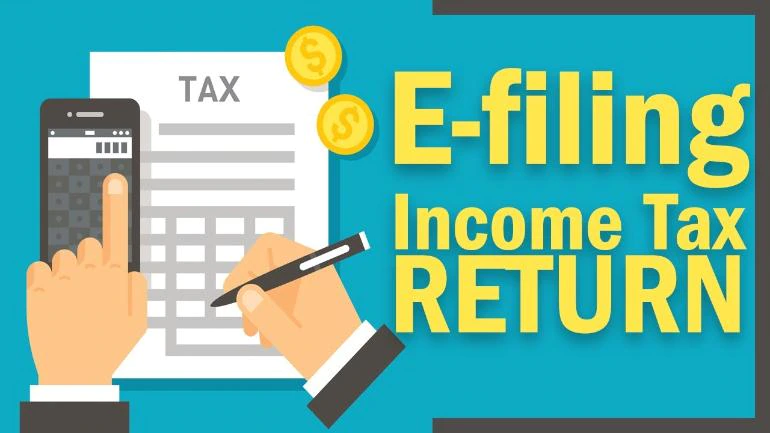Simran Sahni
Introduction:
In an era driven by technology, electronic filing (e-filing) of income tax returns has become increasingly popular and convenient for individuals and businesses. However, with this convenience comes the responsibility to ensure the security and privacy of sensitive financial information. In this article, we will explore essential security measures and precautions that can help safeguard your data and protect you from potential cyber threats during income tax return filing.
Secure Network and Devices:
Before initiating the e-filing process, use a secure network connection, preferably a private and password-protected Wi-Fi network. Public Wi-Fi networks are generally more susceptible to hacking attempts. Keep your devices, such as computers, laptops, and smartphones, updated with the latest security patches and antivirus software.
Official and Verified Websites:
Always use official and verified websites or portals provided by your respective tax authority or government agency for e-filing your income tax returns. Avoid clicking on suspicious links or accessing tax-related websites through email links or pop-up ads, as they might be fraudulent attempts to steal your information.
Strong and Unique Passwords:
Create strong and unique passwords for your e-filing accounts while performing the e-filing of income tax returns. Include letters, numbers, and special upper- and lowercase characters. Avoid using easily guessable information such as your name, birth date, or consecutive numbers. Changing your passwords regularly and avoiding using the same password across multiple platforms is also advisable.
Two-Factor Authentication (2FA):
Enable two-factor authentication whenever possible. This adds an extra layer of security by requiring you to provide a second verification factor, such as a unique code sent to your mobile device and your password. 2FA helps prevent unauthorized access even if your password is compromised.
Encryption and Secure Connections:
Ensure that your e-filing website uses secure encryption protocols, such as SSL (Secure Sockets Layer) or TLS (Transport Layer Security), indicated by the “https” prefix in the website’s URL. This encryption protects your data during transmission, making it difficult for hackers to intercept and decipher the information.
Secure Document Storage:
Safeguard your electronic tax documents by storing them in secure and encrypted folders on your devices or cloud storage platforms. Regularly back up your files to minimize the risk of data loss due to hardware failure or cyber-attacks.
Be Cautious of Phishing Attempts:
Be vigilant against phishing attempts aimed at stealing your personal and financial information. Phishing emails often appear legitimate and urge you to provide sensitive details such as passwords, social security numbers, or bank account information. Avoid clicking on suspicious links or sharing confidential data via email or text.
Review Authorized Access and Permissions:
Regularly review the authorized access and permissions granted to your e-filing accounts. Remove any unnecessary or unused accounts and restrict access to authorized individuals only. This minimizes the risk of unauthorized access and potential misuse of your tax information.
Stay Informed about Security Updates:
Keep informed about the latest security updates and guidelines from your tax authority or government agency. Subscribe to official newsletters or follow their social media channels for timely information on emerging security threats, scams, and best practices.
Monitor and Verify Financial Activities:
Regularly monitor your financial accounts and credit reports to identify any suspicious activities or signs of identity theft. Report any discrepancies or unauthorized transactions to your bank or relevant authorities promptly.
Secure Wi-Fi and Internet Usage:
Avoid using public Wi-Fi networks when accessing your e-filing accounts or transmitting sensitive information. Public networks are often unsecured, making it easier for hackers to intercept your data. Instead, use a trusted and secure internet connection, such as a personal hotspot or a wired connection.
Use a Firewall:
Enable a firewall on your devices to defend against unauthorized access. Firewalls monitor incoming and outgoing network traffic, helping to block potential threats and malicious activities.
Secure Email Communication:
Exercise caution when communicating sensitive information via email. Avoid sending personal data, such as bank account details, through regular email channels. Use encrypted email services or password-protected file attachments for added security if necessary.
Regular Software Updates:
Keep your operating system, web browsers, and e-filing software up to date with the latest security patches and updates. Software updates often address known vulnerabilities, reducing the risk of exploitation by cybercriminals.
Secure Online Payments:
Use secure payment gateways if you make online payments for taxes owed or receive refunds. Find reputable payment processors and verify the website’s security indicators, such as the padlock symbol and “https” in the URL.
Conclusion:
E-filing income tax returns provide convenience and efficiency, but it is crucial to prioritize security and take appropriate precautions. By implementing the security measures discussed above, you can minimize the risk of falling victim to cyber threats and protect your sensitive financial information. Stay vigilant, stay informed, and ensure the privacy and integrity of your e-filed income tax returns. Remember, safeguarding your data is not just a one-time task but an ongoing commitment to your digital security.


